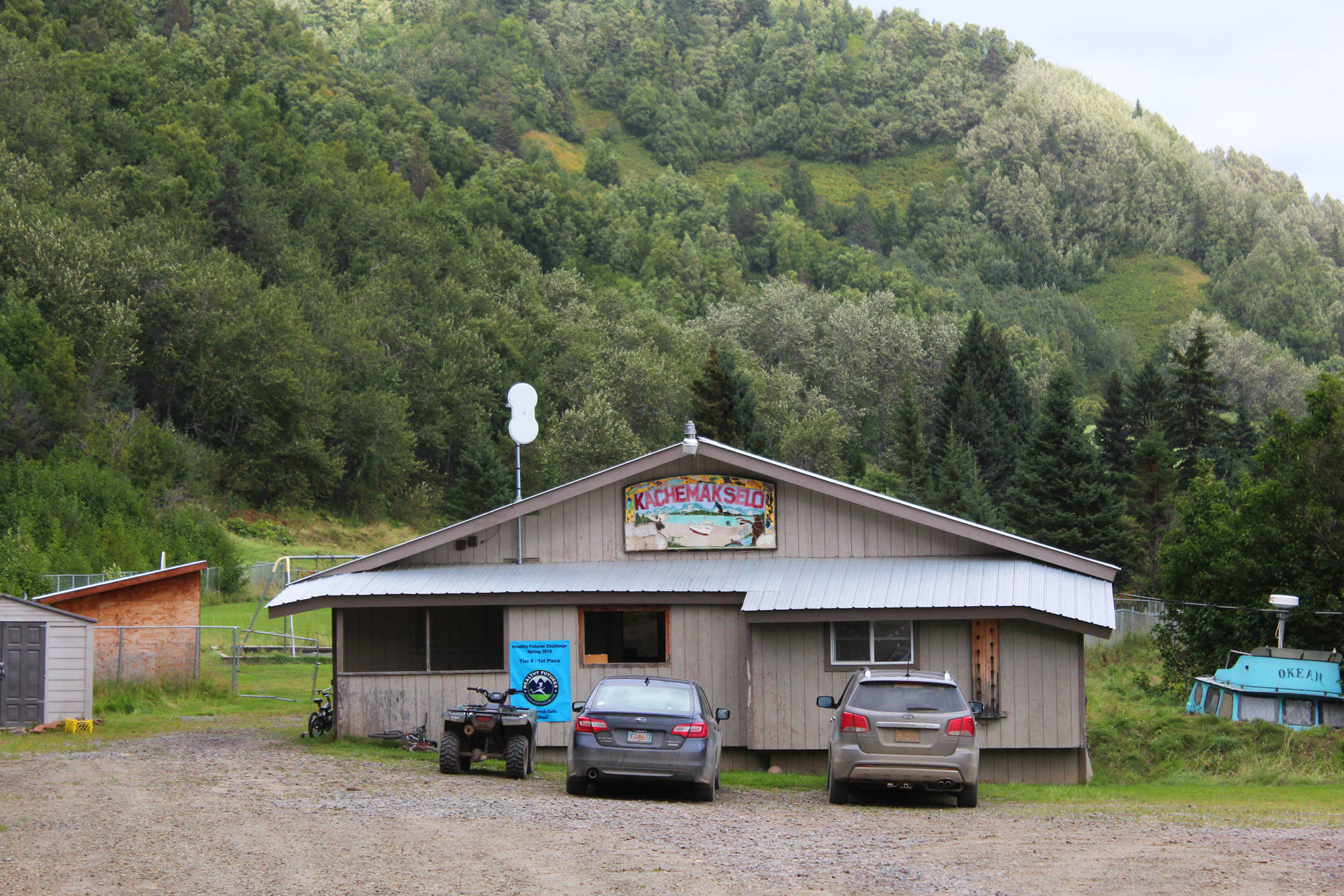Voters will decide on Tuesday whether about 50 students in a remote Kenai Peninsula village will get what public officials have said is a much-needed school facility.
Proposition 1 asks voters to allow the borough to use general obligation bonds of $5.45 million to help build a new school in Kachemak Selo, a Russian Old Believer Village about 30 miles east of Homer. A yes vote allows the borough to go out to bond, and a no vote prevents the borough from doing so.
Students in kindergarten through 12th grade currently learn in three separate buildings that are far past their useful lives, according to school district and borough representatives.
Assembly member Kelly Cooper said during a meeting held in the village last month that the buildings were only ever meant to be temporary, but instead have been used for decades.
The proposed school would be 15,226 square feet and sit on an 8-acre site called “East Site No. 2” that is 3,000 feet east of the current elementary buildings. A road from the k-12 buildings to the new site would have to be built, and is already factored into the overall cost and the bond.
The facility is slated to include six classrooms, a multipurpose room, space for industrial arts and special needs, and a library.
The 8-acre site was selected by a committee formed through the borough, and would be sold to the borough by the current property owner. The borough leases the three current school buildings from the community.
The $5.5 million bond is the local match to the pay for the project, which has about $10 million promised to it by the state through a grant program. Rep. Paul Seaton commented at the Sept. 18 Kenai Peninsula Borough Assembly meeting, held in Homer, that this is the best deal the borough can expect for the project.
“We’ve worked really hard,” he said at the meeting. “This is the best deal that the borough can ever get.”
If the bond proposition fails, Seaton said the borough would still be responsible for building a new school, because state regulations prohibit boroughs from housing students in unsafe buildings. Without the $10 million state grant, the borough would be responsible for paying for the entire project of about $15.5 million, Seaton said.
KBBI reported in August that public officials have said there is “no plan B” if the proposition fails.
Critics of the project say the students deserve a new school, but that the price tag is too high for the number of students it would serve. The borough has answered that its hands are tied by state standards when it comes to building a school. In Alaska, state funding necessary to run a school kicks in when there are 10 students. School buildings have to be built to minimum state standards, borough representatives and Seaton have said, and the borough does not have flexibility within those standards.
The fact that the site is remote and building materials will have to be brought in via the bay is a contributing factor that will raise the cost of construction. Borough Mayor Charlie Pierce discussed the possibility of Kachemak Selo community members taking on the task of building the road from the current school buildings to the new site at the August community meeting, a move he said could save money on the project.
Some critics of the project have asked whether the borough could bring the switchback horse trail that leads from the road system down to Kachemak Selo up to borough standards so students could be bused elsewhere. At the August community meeting, borough representatives said the work group that originally looked into the school issue also explored whether that could be possible. They found building a real road there would cost about $60 million.
Should the proposition pass, the borough would go out to bond for $5.45 million, to be paid back over 20 years. Each borough resident would pay approximately $4.95 per $100,000 of assessed property value based on the borough’s Fiscal Year 2018 taxable assessed valuation.
Reach Megan Pacer at mpacer@homernews.com.


